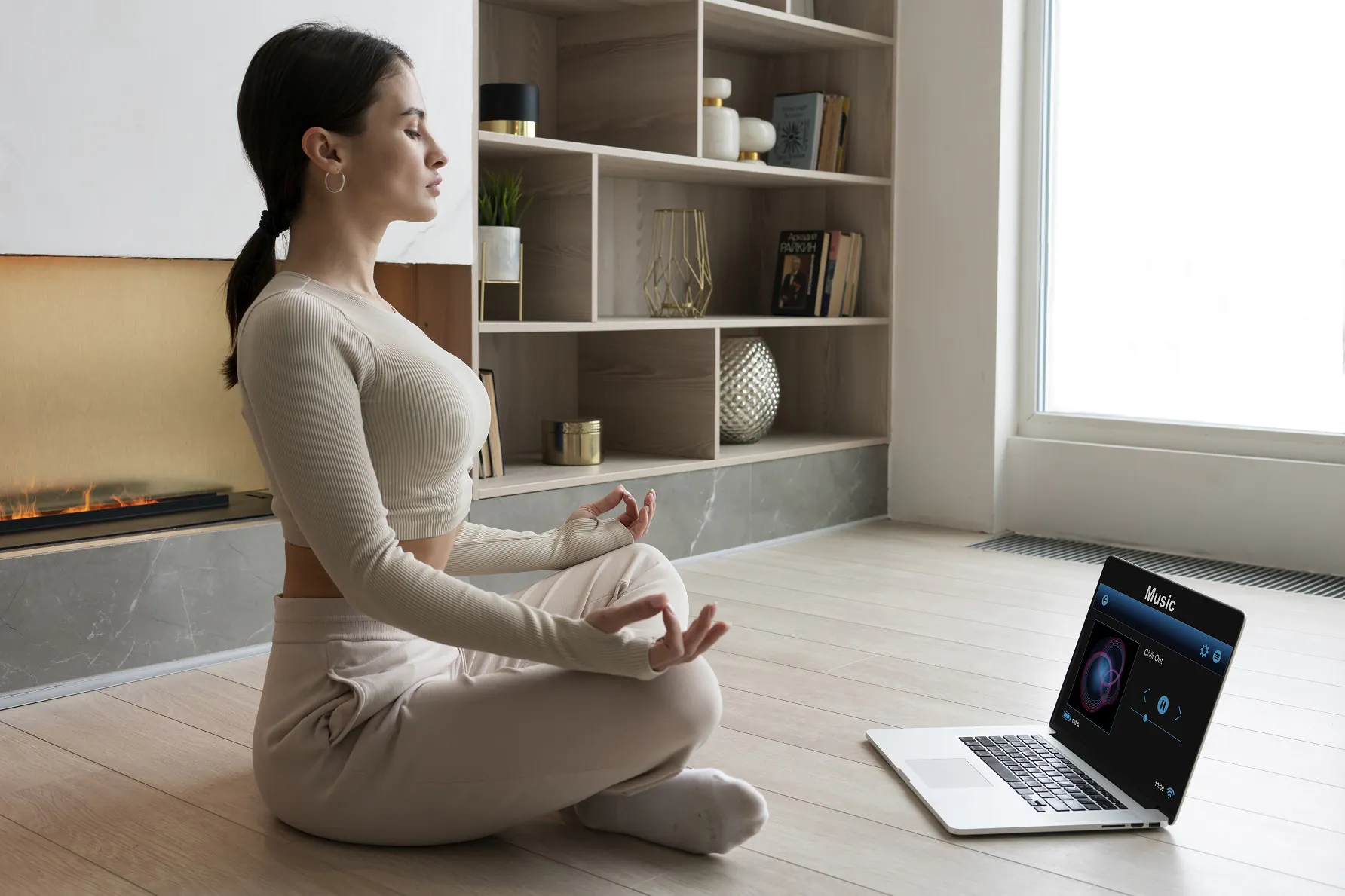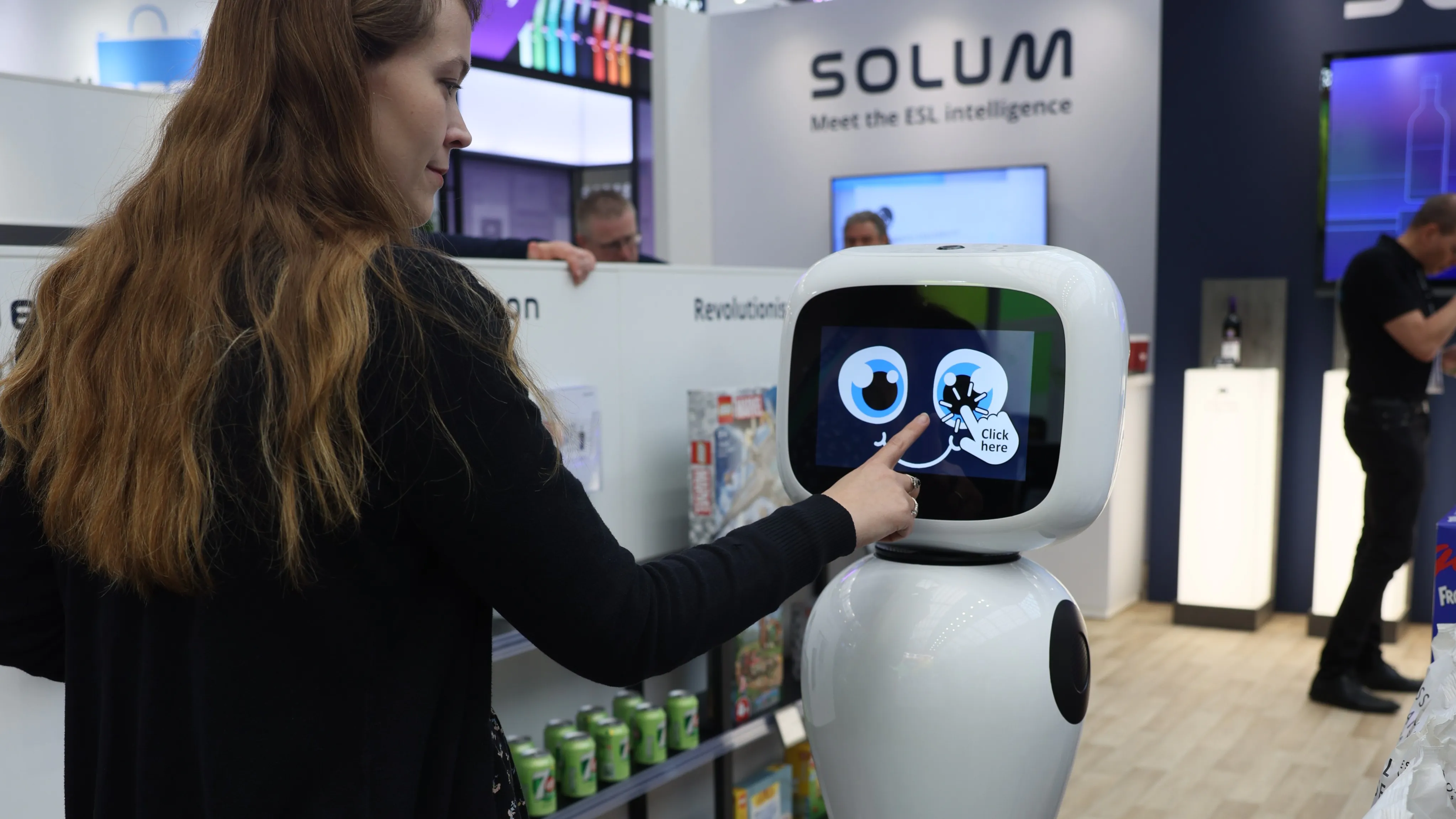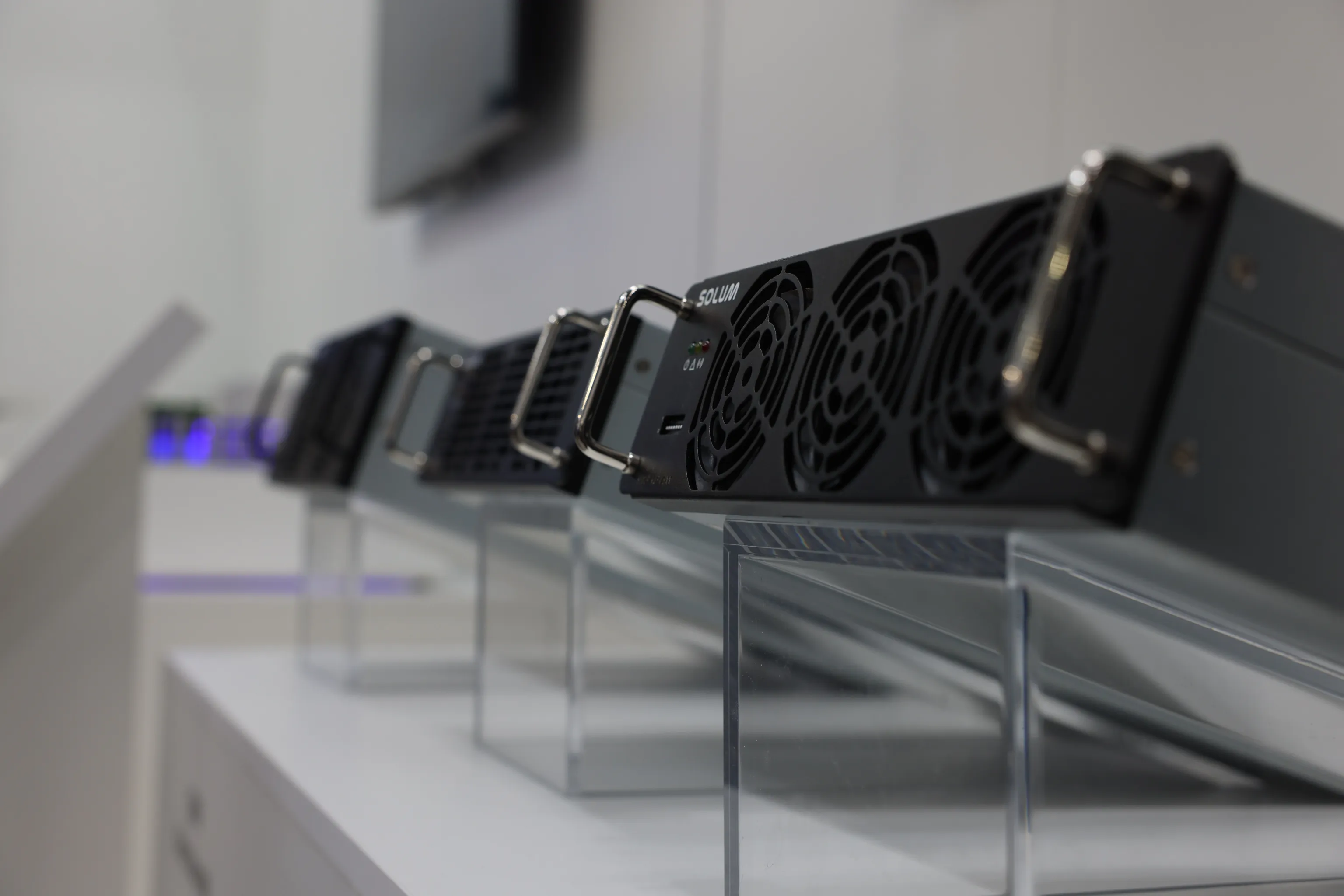Did you know that there are approximately 200-500 million people engaged in meditation worldwide? Meditation brings mental and physical benefits to practitioners. As mental health takes a toll because of the effects of the pandemic, more and more people are turning to meditation, including technology-assisted meditation, which benefits many. So what is technology-assisted meditation?
What is meditation?
Meditation is a practice that involves training the mind to achieve a heightened state of awareness, focus, and inner peace. According to the Cleveland Clinic, meditation also involves focusing or clearing your mind through the use of a combination of various mental and physical techniques. Meditation, in general, encompasses a variety of traditions and practices. However, it’s known to involve focusing the mind on a particular object, thought, or activity, or cultivating mindfulness or awareness of the present moment.
Some common forms of meditation include:
- Concentrative meditation: This meditation involves focusing attention on a single point of reference, such as the breath, a mantra, or a specific object. The goal is to quiet the mind and cultivate deep concentration.
- Mindfulness meditation: In mindfulness meditation, practitioners aim to cultivate present-moment awareness by observing thoughts, feelings, sensations, and the environment without judgment. This practice helps develop a greater sense of clarity, acceptance, and emotional balance within someone.
- Loving-kindness meditation (Metta meditation): This involves cultivating feelings of love, compassion, and goodwill towards oneself and others. In this form of meditation, practitioners typically repeat phrases or affirmations designed to generate feelings of kindness and connection.
- Transcendental meditation (TM): TM is a specific technique that involves silently repeating a mantra to quiet the mind and access deeper levels of consciousness. It is often practiced for 15-20 minutes, twice daily.
- Movement-based meditation: Movement-based meditation focuses on gentle movement and breathing. Practices such as Tai Chi, Qigong, and mindful walking involve combining movement with meditation to promote relaxation, balance, and mental focus.
- Technology-assisted meditation: And, of course, there are also technology-assisted forms of meditation brought about by a new wave of modern technology. Nowadays, there are meditation apps, biofeedback devices, virtual reality (VR) technology, and brainwave sensors that can help people focus, clear their minds, and achieve deep relaxation.
Overall, meditation can be a versatile practice with numerous benefits for the physical, mental, and emotional core of an individual. Meditation can contribute to stress reduction, improved focus, enhanced self-awareness, and greater overall well-being. Though it is often associated with various religious and spiritual traditions, meditation can also be practiced secularly by all kinds of people as a means of promoting mental and emotional health.
Technology-assisted meditation vs. traditional meditation
Comparing the forms of meditation can be expected, especially when it comes to people new to meditation and healthcare professionals. Before anything, people need to realize the differences between technology-assisted meditation and traditional meditation. This includes the tools and techniques used to facilitate the practices.
Here's a brief explanation of the distinctions between the two:
Tools and Techniques
Traditional meditation: Traditional meditation typically relies on simple techniques such as breathing awareness, mindfulness, or mantra repetition. Practitioners often sit in a quiet and comfortable space, close their eyes, and focus their attention inward. Traditional meditation may also involve specific postures or gestures to facilitate concentration and relaxation. However, it generally does not require any external tools or technology.
Technology-assisted meditation: In contrast, technology-assisted meditation involves the use of various tools and devices to support or enhance the meditation experience. This can include smartphone apps, biofeedback or neurofeedback devices, virtual reality simulations, or brainwave entrainment technologies. These tools usually provide guided instructions, visualizations, or feedback to help users deepen their practice or achieve specific mental states.
Accessibility and Convenience
Traditional meditation: Traditional meditation can be practiced anywhere and at any time without the need for special equipment or technology. It is accessible to anyone willing and ready to dedicate time and effort to cultivate a regular meditation practice.
Technology-assisted meditation: Technology-assisted meditation offers added convenience and accessibility for individuals who may find it challenging to establish a meditation routine or who prefer guided instruction or feedback. Meditation apps, for example, allow users to access guided sessions and mindfulness exercises on their smartphones or tablets. This makes it easier to incorporate meditation into daily life and have an established routine.
Enhanced Experience
Traditional meditation: Traditional meditation emphasizes simplicity and self-awareness. They usually encourage practitioners to develop a deep connection with their inner selves and the present moment. It fosters self-discipline, patience, and self-reliance in building mental well-being.
Technology-assisted meditation: Technology-assisted meditation can provide additional support and structure to the practice by offering guided instructions, visual aids, or real-time feedback. This can be particularly beneficial for beginners or those seeking specific results such as stress reduction, improved focus, or better sleep.
Depth and Authenticity
Traditional meditation: Traditional meditation practices often emphasize the importance of direct experience, authenticity, and connecting with timeless wisdom traditions. Practitioners may value the simplicity and purity of traditional methods and the deep insights that arise from long-term practice.
Technology-assisted meditation: While technology can enhance the meditation experience in various ways, some practitioners may be concerned about the potential for distraction or dependence on these electronic devices. However, when used mindfully and in moderation, technology-assisted meditation can actually complement traditional practices and help individuals overcome obstacles to consistent practice.
Devices used in tech-assisted meditation
As mentioned above, there are various devices that can be used in technology-assisted meditation. With the advancement of technology, there are various tools and applications that have been developed to support and enhance meditation practices, whether it be on a professional level or on a personal, casual point of view.
Here are some examples of tech-assisted meditation devices:
- Meditation apps
One of the easiest and most accessible tools for technology-assisted meditation is a meditation app. There are numerous smartphone apps now available that offer guided meditation sessions, mindfulness exercises, and relaxation techniques. These apps often provide a wide range of content and features tailored to different needs. This includes stress reduction, sleep improvement, emotional well-being, or general wellness. Some popular meditation apps include Headspace, Calm, Meditopia, Insight Timer, and more. - Biofeedback devices or neurofeedback devices
Biofeedback devices measure physiological signals such as the heart rate, breathing rate, and brainwave activity, which can provide real-time feedback to users about their body's responses. Neurofeedback devices, meanwhile, measure brain waves and help train the brain and nervous system.
These devices can help individuals learn to regulate their physiological responses and brain functions during meditation. With this technology, they can promote relaxation and stress reduction for the users. Examples of biofeedback devices include heart rate monitors, EEG headsets, and other EEG devices, which can provide feedback on brainwave activity or breathing patterns during meditation sessions. - Virtual reality (VR)
Virtual reality, or VR technology, also goes beyond entertainment purposes. This technology can now create immersive environments that facilitate relaxation and meditation. There are VR meditation apps that offer users the opportunity to escape to various scenes and settings. This includes tranquil landscapes, immersive visualizations, or even virtual meditation studios where they can engage in guided meditation sessions. These virtual experiences can help users deepen their meditation practice by enhancing focus and immersion. - Brainwave entrainment
Brainwave entrainment uses auditory or visual stimuli to synchronize brainwave patterns and induce specific mental states. This includes rhythmic sounds or flashing lights to contribute to mental states like relaxation, productivity, or clarity. Devices like binaural beats, audio tracks, LED therapy, LED strobes, and sound machines are designed to facilitate meditation or sleep health by promoting alpha or theta brainwave activity, which is associated with states of deep relaxation and meditation. - Pulsed electromagnetic field (PEMF) therapies
Pulsed electromagnetic field (PEMF) therapy, on the other hand, uses electromagnetic waves to encourage meditative states. According to Psychology Today, PEMF therapies apply low-frequency electromagnetic waves to the body, where they can influence brainwave activity. This is done by stimulating the neurons and altering the electrical signals in the brain. PEMF devices have gained popularity as a tool for enhancing meditation, stress reduction, and overall focus. - Multi-sensor devices
There are also devices that combine a number of biofeedback devices or sensors to assist with meditation and wellness. These multi-sensor devices usually have the advanced technology to make wellness and meditation easy, innovative, and accessible.
A great example of a multi-sensor device for assisted meditation is SOLUM Group’s Mindy. SOLUM Mindy is a multi-sensor headband device that can provide real-time feedback on the user’s brain activity, heart rate, breathing, and body movements. The multi-sensor device is also connected to a mobile app, which allows users to set goals, track fitness progress and interpret the users’ brain activity to maximize motivation and focus during their meditation sessions. They can measure brainwaves and other vital signs that will help the users meditate and exercise in various ways. This kind of technology is meant to relieve stress, while also boosting fitness.
Multi-sensor devices like SOLUM Mindy can be used by athletes, elderly patients, medical and healthcare professionals, and any other people who want to improve their overall wellness. With SOLUM Mindy and its technologies, users will be able to drive both their physical and mental wellness.
Benefits of technology-assisted meditation
Though it may still sound a little unorthodox to some, technology-assisted meditation offers a range of benefits for users and practitioners. Since it leverages modern tools and techniques to enhance the meditation experience, meditation can be easier for some.
Some of the key benefits of assisted meditation include:
Accessibility
Technology-assisted meditation makes meditation more accessible to a wider audience. Hundreds of millions of people already engage in meditation, but this number can increase further if meditation is made more accessible and easy. For example, 21% of Americans say they are somewhat interested in learning meditation or yoga through virtual classes. (Morning Consult, 2020; Lange, 2020) California-based psychotherapist, Rachel Ruiz, also told Verywell that people turned to meditations during the pandemic as it was the most accessible form of mental health care at the time.
With smartphone apps, online meditative platforms, and wearable devices, individuals can easily access guided meditation sessions, mindfulness exercises, and relaxation techniques from the comfort of their own homes or while on the go.
Convenience
Technology allows for greater flexibility in when and where meditation can be practiced. Users can choose from a variety of guided sessions tailored to their needs and preferences. They can also fit meditation into their busy schedules more easily through the use of meditation apps and phone notifications. In fact, according to Google, the number of searches for beginner yoga and meditation apps increased by 65% between 2019 and 2020.
Guided Instruction
Many technology-assisted meditation tools provide guided instructions and structured programs led by experienced meditation teachers. These guided sessions can be helpful for uncertain beginners or for individuals seeking specific outcomes or meditative states.
Feedback and Tracking
Some meditation apps and devices offer real-time feedback and tracking features. This can allow users to monitor their progress over time. This feedback can help individuals stay motivated and accountable in their meditation practice. Of course, this can also provide insights into patterns and trends in their mental well-being.
Variety and Customization
Technology-assisted meditation tools often offer a wide variety of meditation styles, techniques, and themes to choose from. Users can explore different practices, such as mindfulness, loving-kindness meditation, or breathwork, and customize their meditation experience to suit their preferences and goals.
Enhanced Engagement
Virtual reality (VR), biofeedback devices, or sensors can create immersive and interactive meditation experiences, which enhance engagement and immersion. These technologies provide sensory feedback and visualizations that deepen the meditation experience and promote relaxation and focus.
Community Support
Some meditation apps and online platforms offer community features that allow users to connect with like-minded individuals and practitioners, share experiences, and participate in group meditation sessions or challenges. This sense of community support can foster motivation, accountability, and a sense of belonging for all kinds of people.
Why use Mindy for tech-assisted meditation?
SOLUM Group’s Mindy, as a tech-assisted meditation, can be an efficient and innovative way to achieve mindfulness, focus, and good physical health. It’s equipped with an EEG Sensor, PPG+Pulse Oximeter, Accelerometer, PPG+Gyroscope, a five-hour battery life, LED indicator, and a mobile app. With these various technologies and features, users will be able to practice different kinds of meditation and techniques.
Here are a few reasons why practitioners should use SOLUM Mindy:
- It can be a mental healthcare device - Mindy has guided meditations that can help people reduce stress or focus to get through the day. With these, users can easily achieve mindfulness and productivity.
- It can improve sleep quality - Mindy can also help improve sleep quality with its meditation and relaxation exercises. Sleep can be more consistent and more serene.
- It can help with physical workouts - Mindy can also help users achieve more efficient and precise workout sessions. Users will also be able to build a better connection with their minds and muscles.
- It can help users have a meditative routine - Mindy also has its own app that can help users pick guided meditations or sessions, set goals, and track personal progress. This can help users have a more consistent routine and be more motivated with every session.
Overall, SOLUM Mindy is here to help users transform their meditation experience. This is how significant technology-assisted meditation is for people who want to improve their mental health and overall well-being.
Do you think SOLUM Mindy can help you or your clients as a meditation device? Contact SOLUM experts now and learn more about how it can help you!
SOLUM Marketing
Category
Keywords











